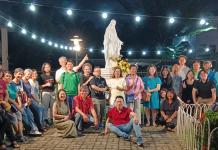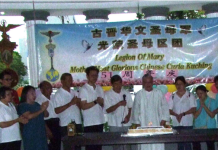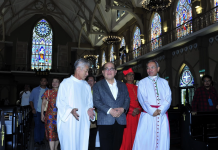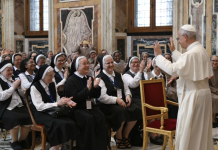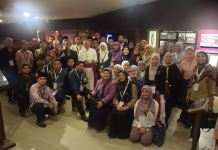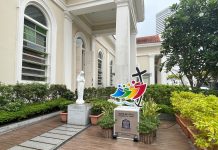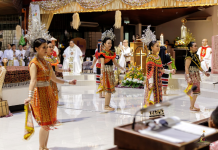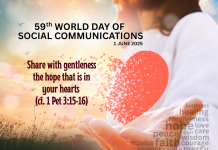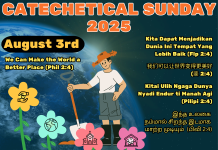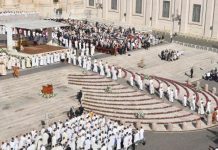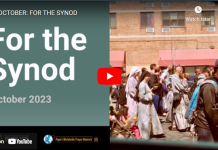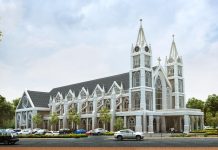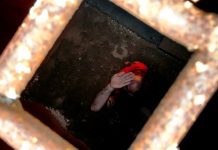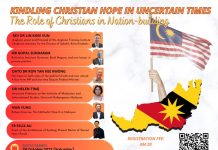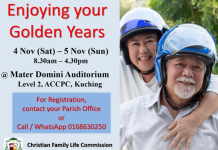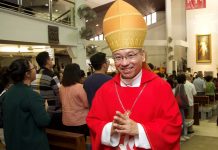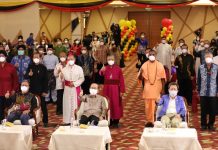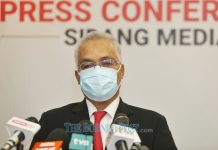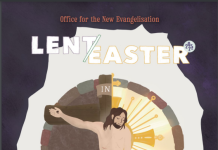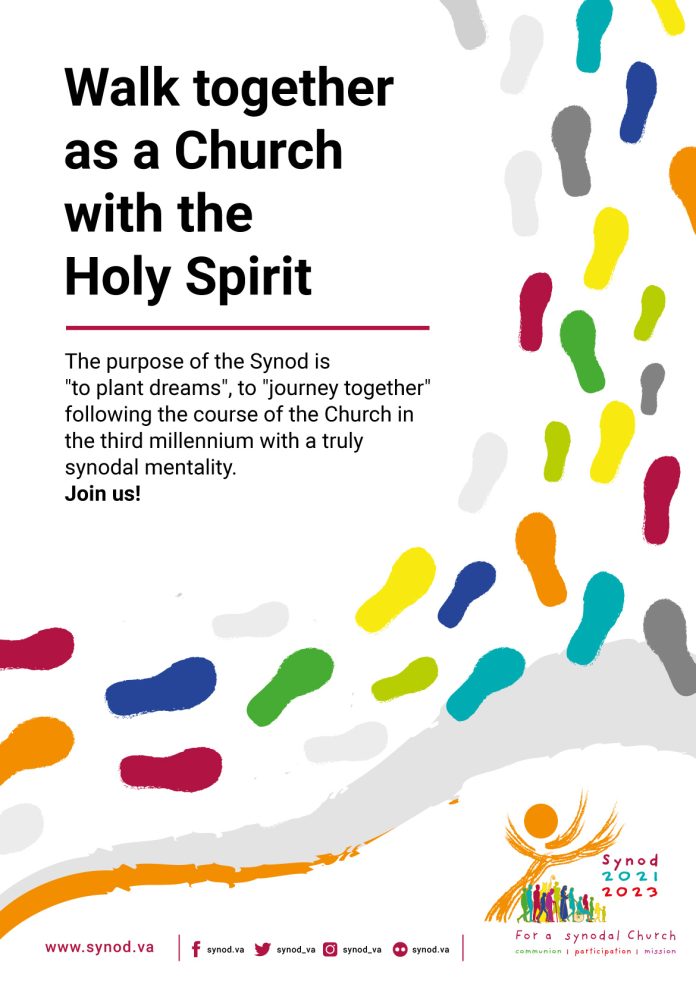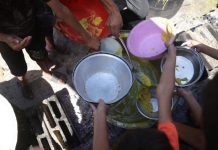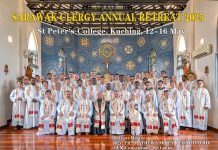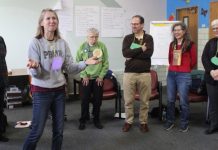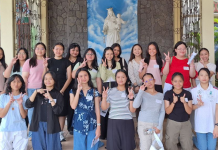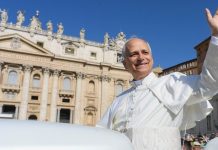By Charles Bertille
KUALA LUMPUR — “It has been a mixed start to the Synod process locally.” This was the note emerging from the eleven diocese reports, as well as from the joint meeting of Diocese Contact Persons with the synod coordinator for the Catholic Bishops Conference of Malaysia-Singapore-Brunei (CBCMSB) on 27 October 2021.
Diocese Contact Persons – The Diocese Contact Person (s) appointed to guide and animate the diocesan phase of the synodal process within the eleven dioceses of Malaysia, Singapore and Brunei consist of three lay persons, one religious, and seven priests; working together with the synod coordinator for the Conference, a lay person. They are the following:
-
- Mr James Chua – Brunei
- Mr Anthony Lim – Kota Kinabalu
- Sr Evelyn Tivit – Keningau
- Fr David Garaman – Sandakan
- Fr Patrick Heng – Kuching
- Fr Ivan Fang – Sibu
- Fr Andy Lee – Miri
- Ms Rita Krishnan – Kuala Lumpur
- Fr Moses Rayappan – Malacca Johore
- Fr Jude Miranda – Penang
- Fr Valerian Cheong – Singapore
- Mr Charles Bertille – CBCMSB
While there has been various forms of assemblies and participation within our local churches in recent history, the call of the Holy Father to explicitly build a synodal church carries within it newness and a call to conversion. Some of our dioceses are well into their consultation process; others are just beginning. Some have developed a very comprehensive animation of all communities. Everywhere, the respective teams are learning as they engage in the process. Here are some highlights and challenges that emerged through the diocese reports:
What are some of the local highlights?
- The launching Mass has been celebrated in nearly all dioceses.
- Coordination and facilitation teams have been established in nearly all dioceses.
- The information / materials on the synod is being communicated within dioceses.
- Translations have been / are being done into local languages / dialects.
- There is creative use of video clips, children’s animation, and going out to peripheries.
- The CBCMSB has issued a pastoral letter in major languages; video conversation with the Bishop President on the Synod; and a webpage dedicated to the Synod news from all eleven dioceses and Rome at: https://cbcmsb.org/synod-of-bishops-2023/
- The Conference will dedicate their January 2022 meeting to discuss the preliminary findings and discern the way forward.
- A regional online pre-synod consultation is proposed on 15 July 2022, before finalising the report to be submitted to Rome.
What challenges do we face?
- Geography – Christian communities are also spread out in remote areas especially on the island of Borneo
- Diversity – Besides ethnic groups and languages, there is the urban-rural divide, digital savvy vs access to internet, levels of education, etc.
- Catholic culture – the traditional culture of Catholics who are used to waiting for instructions from the parish priest, or clergy who are resistant, is being put to question.
- Processes – some parishes / dioceses may have too simply reduced the questions to a survey questionnaire. With the extended date, everyone is encouraged to deepen and widen the animation process for the synod. The findings can also be shared as feedback to the people, used for subsequent parish assemblies, or study days to reflect on local and national issues, and discern what the Spirit is saying to the churches.
Some points of attention
Here are some points of attention that was picked up from reports, meetings and conversations, which can help each parish / diocese to live well the synodal process:
- Catechesis – It was felt that the entire people of God need more catechesis and encouragement on the synodal process in order to actively participate and truly listen to the Spirit.
- Reaching out – It is vital to continue to reach out to the indigenous (orang Asli), migrants, remote communities, lapsed catholics, and other special groups, including christians and other faiths, to listen to them. This was further confirmed during the meeting with the Synod Secretariat.
- Animation – The facilitators and coordinators of Basic Ecclesial Community (BEC), Catechists, Religious, Lay Movements, can all play a significant role in this process of outreach, facilitation and listening.
- Timing – With the extended timing, dioceses that would have finished the process and reports earlier, what do they do in the months of February to August? They can simply continue to:
- Deepen and widen the Synod process – by going further towards persons and groups in the peripheries; encouraging creativity & animating various groups; revisiting the themes; etc.
- Parishes can have a Study Day – to reflect on the data gathered through the Synod process and see what they can bring into their annual pastoral planning.
- Reflect on common social / national issues – In the light of the findings of a synodal Church locally, we can listen to the Spirit together, etc.
- Reporting back – the extension gives time for wider consultation and to give feedback to those consulted and the people. It is good to sense together what the Spirit is saying to the diocese/s.
- Creativity and integrity of the process – While the Synod Secretariat encourages creativity and adoption of the materials, the Vademecum also invites us to keep in view the integrity of the process and experiences.
- Responsibility of Diocese Contact Persons & Dioceses – Article 4.1 of the Vademecum says that if the heart of the synodal experience is listening to God by listening to one another, then the first responsibility of the Diocese Contact Person (s) appointed to guide and animate the diocesan phase of the synodal process is to ensure the widest possible participation. “We must personally reach out to the peripheries, to those who have left the Church, those who rarely or never practice their faith, those who experience poverty or marginalisation, refugees, the excluded, the voiceless, etc.”
- Significance of dialogue – Therefore, “superficial or scripted input that does not accurately and richly represent the experience of the people will not be helpful, nor that which does not express the full range and diversity of experiences.” Checking in with the Synod Method Team, they do encourage dialogue in the process of responding to the questions. They ask dioceses to go beyond quick surveys or ‘completing a report’, so to say. We need to be attentive to this when formulating questionnaires.
- Communication – how do we communicate publicly the good news of the synod and promote it internally and externally? It needs reflection, planning and cooperation among various offices.
- The synod coordinator for the Conference requested all Diocese Contact Persons to post updates of their local synod activities (pictures, tools, video clips, creative images, etc.) on their respective diocese Facebook or website. The link is then shared with the coordinator who has already established a separate page on the Conference website. See https://cbcmsb.org/synod-of-bishops-2023/ Extracts of this will then be forwarded to the Synod Secretariat in Rome.
- Monthly review – the Diocese Contact Persons agreed to submit a brief monthly review, the next being in December 2021, which can then be used to send out a monthly brief and attached links for public reading.
Suggested new timeline for local phase
Everyone welcomed the extension of the time given to local dioceses from April to mid-August 2022. Here is a proposed working schedule for dioceses of CBCMSB:
- Dioceses – submit by 01 June 2022, instead of 28 February 2022, to the synod coordinator / Conference secretariat.
- Conference secretariat – consolidates a regional report in June (with some selected diocese representatives) and sends the report to all bishops, contact persons, and diocese delegates to the regional event.
- Online national / regional pre-synodal event – 15 July 2022, to be confirmed.
- Celebration for conclusion of phase one – to be confirmed.
- Bishops’ Conference – meeting from 8 – 13 August 2022 to listen and discern.
- Submission of report – Conference secretariat submits final report to Rome – by 15 August 2022.

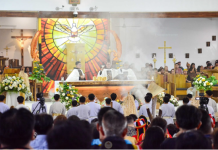
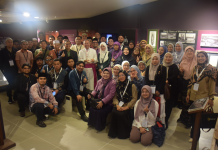
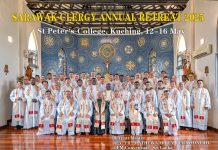
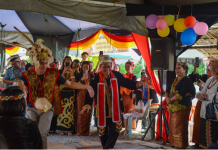
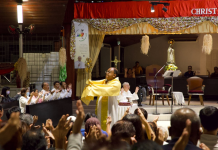
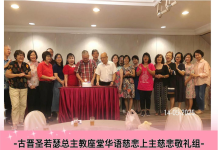
多默·博比·恩普拉依尔神父在朝拜圣体中降福信友;跪在他身后的是黄伟乾神父。-218x150.png)
